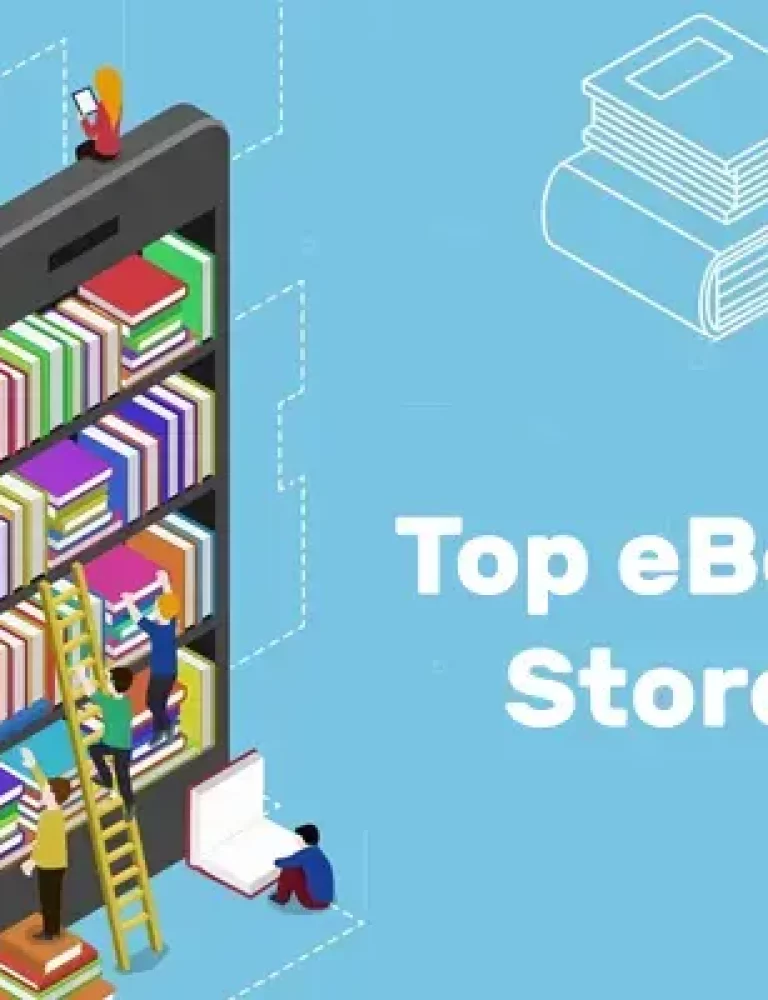In an era dominated by digital devices, learning has yet to fully harness the tremendous potential of the electronic format. Despite the introduction of digital formats years ago, so far, eContent has predominantly played a supplementary role in learning.
Digital content designed for reading is either created as a PDF or an eBook. PDFs are the de facto standard for creating, storing, and transferring documents. On the other hand, eBooks are more attuned to the reading experience and, by extension, the learning process. Therefore, publishers, educators, and readers often need to convert PDFs to eBooks.
In this post, we’ll explore the seamless conversion of PDFs to eBooks, highlighting the advantages and providing efficient tips for a smooth process. Read on!
Table of Contents:
I. Understanding Digital Learning
II. What Are the Advantages of eBooks over PDFs?
III. Steps for a seamless PDF-to-eBook conversion
- Outline the eBook Elements
- Prepare the PDF for Conversion to an eBook
- Launch the Conversion Tool and Upload the PDF
- Include Additional Elements in the eBook
- Publish the eBook
IV. Conclusion
Understanding Digital Learning
Electronic content brings forth a myriad of possibilities for the education ecosystem. It empowers learners and educators in a multitude of ways, including allowing them to access digital content on-the-go and at a convenient time.
Students can personalize their learning methodology according to their preferred schedule and reading styles. Enormous chunks of digital content can be packed into a single electronic device.
This reduces the literal, physical burden that students and educators need to carry. Furthermore, the cost reduction inherent in digital publishing makes education more accessible and inclusive.
Digital textbook platforms like KITABOO are leveraging these benefits to revolutionize the way readers engage with content through various interactive features.
What Are the Advantages of eBooks over PDFs?
A PDF document is the most popular format to store, access, and distribute content. Notably, PDFs are also used to design and print out physical textbooks. They closely mimic the physical textbook layout, thereby usually being static in nature.
In contrast, eBooks are the standard choice for publishing books in an electronic format. The goal here is to optimize digital content for the user experience on an eReading device. Since eReaders have different screen sizes, eBooks have a fluid layout that is adapted to create the optimal user experience.
Below are some of the key advantages of eBooks over PDFs in the context of the learning experience:
Reflowable Layout
Users can access PDFs from all the commonly used electronic devices, like computers, smartphones, and tablets. However, the appearance of a fixed-layout PDF will be the same on each of these devices.
In other words, the layout and flow of the content are usually static for a PDF. Unlike PDFs, eBooks have a dynamic or reflowable layout. The flow of an eBook is a function of the eReader’s parameters. Depending on the screen size, aspect ratio, and orientation, the content will reflow to optimize the user experience.
Interactive Content
While PDFs often include graphical and visual elements, eBooks and eReaders actively prioritize user interaction in several ways. Readers can annotate, search, and mark text for later use. eBooks also support interactive content like audio and video clips. Publishers and educators can leverage such features to add depth to the learning process.
Comfortable Reading Experience
Users are forced to zoom, pan, and scroll to read a single fixed-layout PDF page on a small screen. This is because of the static nature of a PDF’s layout. On the other hand, the layout of an eBook will reflow to fit the current screen. The user can thus read the content seamlessly via either scrolling or paging.
Accessibility and Inclusivity
eBooks are more suitable for reading on smaller screens because of their dynamic nature. Notably, small form-factor mobile devices have a wider reach and are more affordable than computers.
Moreover, many users prefer ergonomic eReaders due to physical challenges or because they are more suitable for their reading environment. Therefore, eBooks allow publishers and educators to boost the accessibility and inclusivity of their content. Due to the numerous advantages that eBooks offer for the learning experience, it is common practice to convert PDFs to eBooks.
Digital textbook platforms like KITABOO provide a host of features and advantages that make them preferable for educational purposes. This way, it enhances the overall learning experience for students, educators, and institutions.
Steps for a Seamless PDF to eBook Conversion
For a glitch-free conversion from PDF to eBook formats, follow the steps mentioned below:
Outline the eBook Elements
Create notes and markups to outline the structure and components of the eBook you wish to generate. Demarcate the content you wish to retain as plain text to segregate it from blocks that require interactive elements. Identify text where hyperlinks are to be added.
Prepare the PDF for Conversion to an eBook
Refer to the previous step and make the required changes and corrections to the file using a PDF editor. Grammatical corrections, inclusion of visual elements, and other changes must be made before proceeding further. To integrate multiple PDF files into an eBook, repeat these steps for each PDF document.
Launch the Conversion Tool and Upload the PDF
Identify a PDF to eBook converter based on your requirements and upload the PDF file to the converter. If you wish to include multiple PDFs in the eBook, upload all the files in one go.
Include Additional Elements in the eBook
Advanced PDF-to-eBook converters allow you to customize your eBook with interactive elements. You can elevate your content with additions like images, audio files, and videos. This is often a time-consuming yet rewarding part of converting PDFs to an eBook.
Publish the eBook
As the final step, publish the eBook by exporting the PDFs to your preferred eBook format. The recommended format is ePub because it is standardized and works across most eReaders. This format also offers the option of encrypting your eBook to protect it against piracy.
After the export, review the eBook for final checks. Your content is now ready to be consumed seamlessly across a plethora of devices.
Publishers can partner with KITABOO, a leading digital textbook platform in this regard, to facilitate the publishing process. The platform ensures that the converted eBooks maintain their quality and interactive features, providing an enhanced learning experience in the long run.
Conclusion
Given the growing prevalence of eLearning, PDFs and eBooks are the preferred formats for content consumption. However, eBooks are more user-friendly and adaptive, while also providing an array of interactive features that can revolutionize the education ecosystem. Thus, publishers and educators often choose to convert a PDF to an eBook to leverage the latter’s unique benefits.
To ensure this seamless conversion, you must carefully plan the layout of the eBook and choose an efficient converter. With digital textbook platforms like KITABOO, you can effortlessly create eBooks that offer an engaging, enjoyable, and efficient learning experience for everyone. With our expertise, you can create content that is not only visually appealing but also optimized for various devices and learning styles.
To learn more, contact us at KITABOO@hurix.com!
Discover How An Ebook Conversion, Publishing & Distribution Platform Can Help You
Kitaboo is a cloud-based content platform to create-publish & securely distribute interactive mobile-ready ebooks.
You May Also Like
-
KITABOO Review: Revolutionizing eBook Creation in 2024
Blog,Digital Publishing,eBook solution / February 29, 2024







